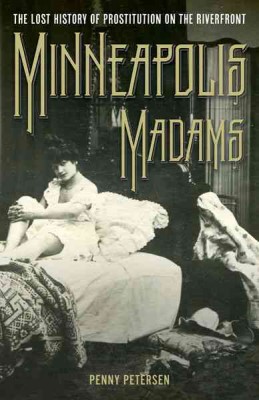| Minneapolis Madams: The Lost History of Prostitution on the Riverfront Contributor(s): Petersen, Penny A. (Author) |
|
 |
ISBN: 0816665249 ISBN-13: 9780816665242 Publisher: University of Minnesota Press OUR PRICE: $22.46 Product Type: Paperback - Other Formats Published: July 2013 |
| Additional Information |
| BISAC Categories: - Social Science | Women's Studies - History | United States - State & Local - Midwest(ia,il,in,ks,mi,mn,mo,nd,ne,oh,sd,wi - Social Science | Prostitution & Sex Trade |
| Dewey: 306.740 |
| LCCN: 2013010354 |
| Physical Information: 0.69" H x 5.58" W x 8.48" (0.61 lbs) 240 pages |
| Themes: - Sex & Gender - Feminine |
| Descriptions, Reviews, Etc. |
| Publisher Description:
In their heyday Minneapolis brothels were not only open for business but constituted a substantial economic and political force in the city. Women of independent means, madams built custom bordellos to suit their tastes and exerted influence over leading figures and politicians. Petersen digs deep into city archives, period newspapers, and other primary sources to illuminate the Minneapolis sex trade and its opponents, bringing into focus the ideologies and economic concerns that shaped the lives of prostitutes, the men who used their services, and the social-purity reformers who sought to eradicate their trade altogether. Usually written off as deviants, madams were actually crucial components of a larger system of social control and regulation. These entrepreneurial women bought real estate, hired well-known architects and interior decorators to design their bordellos, and played an important part in the politics of the developing city. Petersen argues that we cannot understand Minneapolis unless we can grasp the scope and significance of its sex trade. She also provides intriguing glimpses into racial interactions within the vice economy, investigating an African American madam who possibly married into one of the city's most prestigious families. Fascinating and rigorously researched, Minneapolis Madams is a true detective story and a key resource for anyone interested in the history of women, sexuality, and urban life in Minneapolis. |